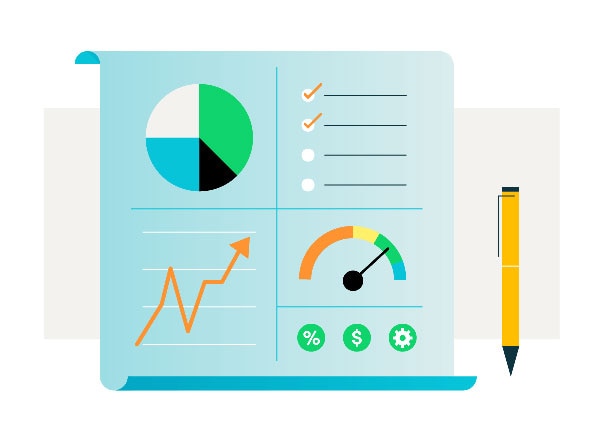4 types of scenario planning
Every company has unique attributes, which are reflected in its scenario planning. You can choose from four scenario planning formats based on your industry, goals, and challenges.
1. Operational scenarios
Also called event-driven scenarios, these are some of the most common internal planning formats. Operational scenarios explore the impact of different events and how they immediately impact the business.
Examples of operational scenarios can range from climate change disrupting supply chains to competitors developing more advanced technology. Then, a plan is devised for what actions will be taken. Operational scenario narratives may pose questions such as:
- How will we respond if we face this obstacle?
- What are the implications for our product or service?
- How much time will we have to adapt?
2. Quantitative scenarios
With quantitative modeling, possible futures are expressed mathematically by adjusting a limited number of variables or unknowns. The output is expressed numerically with certain key performance indicators (KPI), such as a return on investment (ROI), revenue projection, or market share.
For example: What would our market share be if we lost 2% of revenue next year?
By altering inputs, companies can identify the driving factors behind best- and worst-case scenarios. This method is helpful for teams that only feel comfortable when a hard number is attached to the model.
3. Normative scenarios
Normative scenarios (or prescriptive scenarios) refer to what a company wants to achieve or its ideal end state. You can think of them more as vision statements than objective plans. Normative scenarios typically start with a preferred vision of the future, after which the company works backward to determine the steps needed to get there.
Normative scenarios are often used in tandem with other scenario planning formats. For example: once a manufacturing business identifies its strengths and weaknesses, its normative scenario details the values, attitudes, and mindset necessary to realize its vision for what the future could look like.
4. Strategic management scenarios
Also called alternative futures scenarios, these narratives focus on long-term macro-changes in the marketplace instead of short-term issues. This includes the role of consumer preferences, the government, and other regulatory bodies.
For example, an automotive company might craft an alternative futures scenario about the rise of electric vehicles and emissions regulations.
Strategic management scenarios are challenging to develop because they require deep insights into the industry, economy, and marketplace. Accordingly, planners may bring in consultants or analysts to assist in the scenario planning process.











